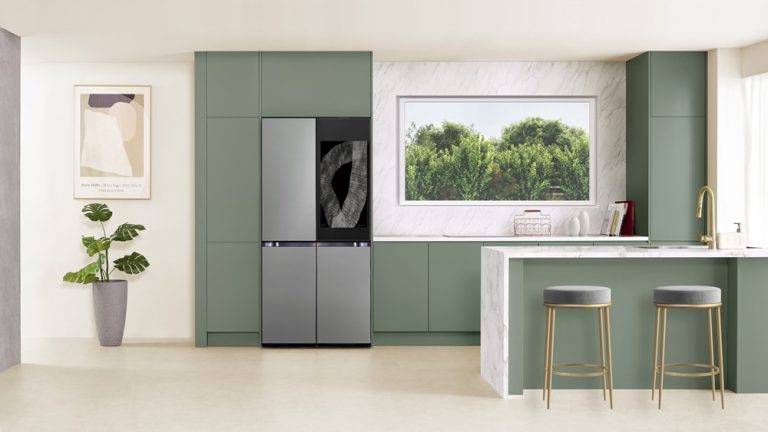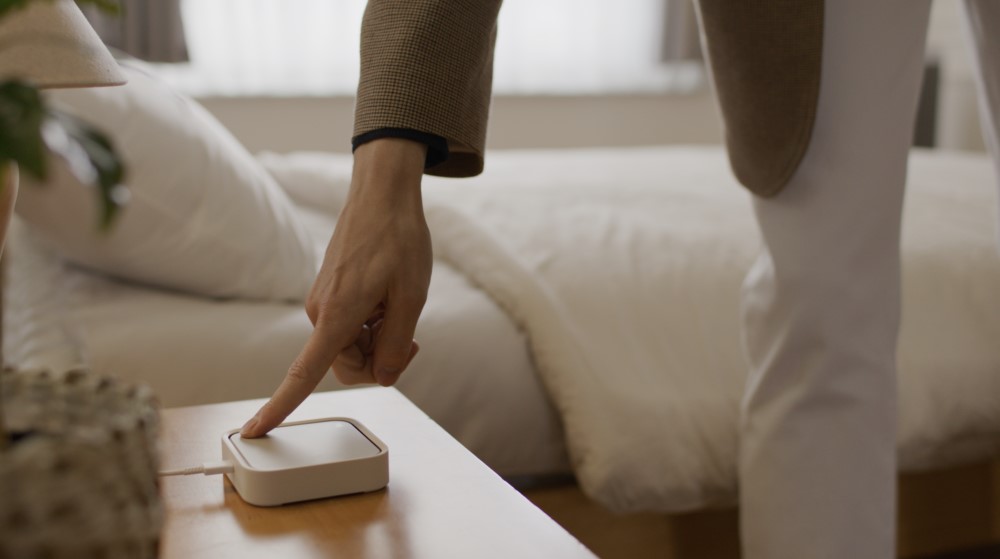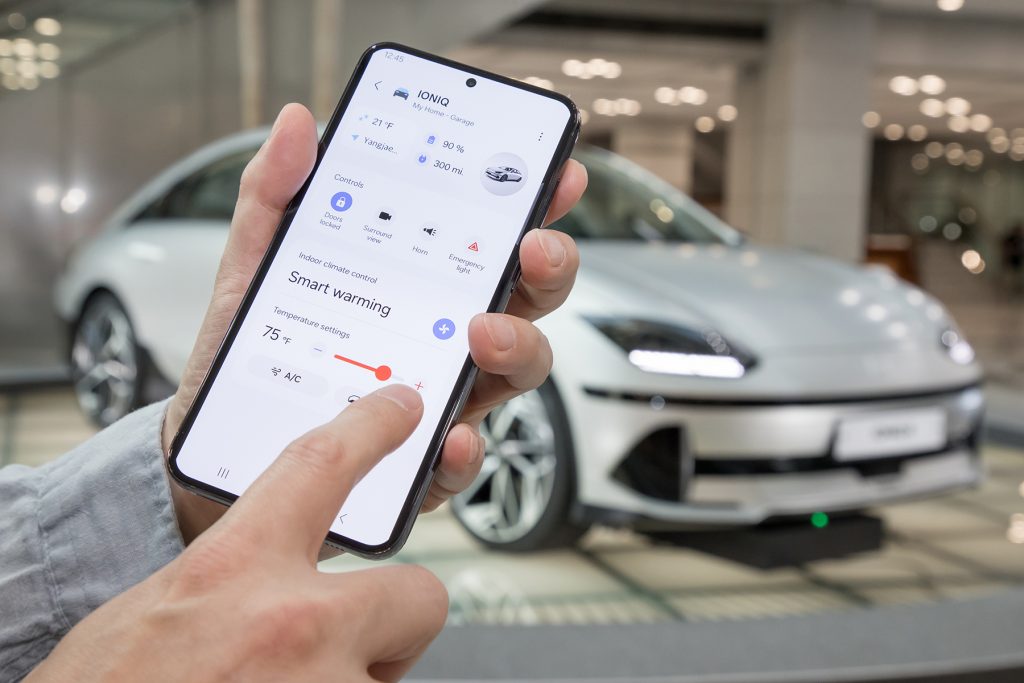How Samsung’s SmartThings is set to evolve smart home tech in 2024
Samsung's Jaeyeon Jung talks to us about the potential impact of SmartThings on the future of the smart home

Samsung has been talking up a renewed effort in the SmartThings smart home ecosystem at CES 2024.
We spoke to Samsung’s executive vice president Jaeyeon Jung, head of Samsung’s SmartThings Team ahead of the show to find out how SmartThings is developing, the impact of Matter and the potential of the SmartThings Find network for locating lost devices.
2024 feels like it is a big year for the smart home with wider Matter support in particular – how big is the opportunity there for that story of interoperability?
It is no secret that smart home adoption is growing rapidly and on a global scale. The average household in the US has more than 20 connected devices that provide convenience, security and entertainment. People want these devices to work together seamlessly but most do not purchase them all from a single manufacturer. Therefore, Interoperability is the key to unlocking better and more inclusive living when it comes to smart home technology, and Matter brings the industry together around a new standard to make truly smart living more accessible for everyone.
SmartThings was born out of the need for devices to work better together and interoperability is also at the core of what we do. Our Works with SmartThings (WWST) certification program complements Matter to provide exceptional experiences on top of Matter’s foundational interoperability. For example, because of Matter, Eve Energy plugs can now easily connect with SmartThings, and with their WWST certification we have built additional functionality to monitor the energy of your whole home to learn how to save energy and money using their plugs. Matter will unlock even more experiences like these.
Can Matter really remove the barriers that have plagued the concept of the smart home so far? How can it help those who have already got lots of non-interoperable devices in their homes?
There is an abundance of choice for consumers, from ecosystems to device manufacturers. While these choices have many benefits, this has also created a fragmented landscape that has made onboarding, set up and connectivity difficult. Matter solves this issue by creating a standard of interoperability – if it has the Matter logo, then it will easily connect and just work.
People who have non-Matter devices can still benefit from an interoperable home when they choose SmartThings as their ecosystem. The combination of Matter and WWST allows users to continue to build on the smart home they already have, as SmartThings has established partnerships with hundreds of other smart home device manufacturers and platforms to ensure devices can communicate with each other and be controlled through a single app or interface. We also partner with other ecosystems to allow for seamless integration and device control. SmartThings is open and customizable, allowing developers to create custom integrations and apps that can enhance the functionality of the platform and provide additional interoperability with other devices and platforms.
What technology standards are your goal to support going forward? Is Matter the priority now?
SmartThings is fully committed to Matter and actively ensures seamless integration with this standard. This commitment empowers consumers to choose devices from different manufacturers and ecosystems to enhance their smart home experience.
There is a growing industry consensus that a unified smart home standard is necessary to ensure seamless interoperability between different devices and platforms. As pioneers in the smart home industry from the very beginning, we believe Matter will become the de facto standard in every smart home in the world.

How will the SmartThings goal of the ‘Hub Everywhere’ evolve in 2024?
To truly resonate with consumers, the smart home must transition from being seen as a novelty to becoming essential. ‘Hub Everywhere’ aligns with the need for practical, secure and essential smart home solutions that simplify daily life. We are continuing to prioritize this strategy for 2024.
Now, we have more devices with Hub functionality than ever. Last year, SmartThings Station launched. It’s an affordable smart home Hub inside a wireless charger. It joined all 2023 Samsung TVs, Smart Monitors, Projectors, Family Hub refrigerators and the Samsung Soundbar as a Hub device. Plus, new features like Hub Replace allows users to seamlessly transfer their Matter, Zigbee, Z-Wave and Thread networks and devices plus the Hub’s Edge Driver data, routines and other Hub settings to a new device with just a few taps.
For 2024, this means more multi-Hub networks for a larger range and simplified setup and recovery. For example, if the Hub fails or the user decides to purchase a new device, the smart system will automatically recover itself on another SmartThings Hub-enabled device in the home.
QHow much of a challenge has it been to develop the SmartThings Find network? What’s the opportunity there?
SmartThings has worked hard to develop its Find network. It has recently expanded to include 300 million ‘find nodes’, which are registered and opted-in devices. These devices can work together to help other Samsung Galaxy users find lost devices through the Find network.
With the help of the SmartThings Find technology, customers can easily find lost items with tags attached. SmartThings Find is widely used to take care of pets. It recently expanded its services with financial companies to provide solutions for loss of credit cards.

Is there potential for SmartThings Find to be integrated natively into Android and even iOS?
We are always considering a variety of possibilities to provide expanded services to our customers through SmartThings Find. However this is not a focus area for us right now.
How much of a disadvantage do you think it is for SmartThings that Samsung’s Bixby wasn’t as popular as other virtual assistants?
SmartThings is more focused on connecting smart devices to create an interoperable smart home experience. This means our success is contingent on the widespread adoption of virtual assistants, regardless of their manufacturer.
The big advantage of Bixby is the voice interface optimized for the multi-device connection environment. And it has contributed to creating a high-quality smart home with SmartThings. For instance, we’re excited about Bixby’s recent advancements in Command Contextualization. This will automatically route voice commands to the most appropriate SmartThings connected device based on where you are in the house and the nature of your request. Moreover, it will play a more important role in the SmartThings experience by applying generative AI technology.

What is the single big challenge for SmartThings in 2024?
For 2024, we’re focusing on making SmartThings even more immersive and user-friendly. We’re introducing new and enhanced experiences that integrate smart technology based on AI into everyday life. We believe that customers will now have more integrated AI experiences through SmartThings.
For example, Ballie and a LiDAR-based robot vacuum cleaner use spatial AI 3D map technology to create detailed floor plans reflecting the layout of your house. Another example is the new Samsung Daily+ which integrates multiple functionalities right from your TV: control your smart home, make a video call and even connect to pet health services.
We’re also introducing Home QR Codes, which allows you to easily invite your family members, friends or guests to control specific devices and create automatic execution environments. And the Occupancy Detection and Recommendation feature now recommends device actions by detecting user presence and device status, allowing for greater home management.
Additionally, our SmartThings Care Services provides enhanced support for parents, young children, and even pets. For example, through activity detection, caregivers can receive notifications for daily movements and respond promptly to emergencies.
Lastly, through our partnerships with Hyundai and Tesla, we will now be integrating SmartThings with vehicles. This extends SmartThings beyond the home and into transportation for the first time. We truly believe that we are just scratching the surface on what is possible with SmartThings.
Read more: CES 2024: all today’s news and launches from tech’s biggest show
